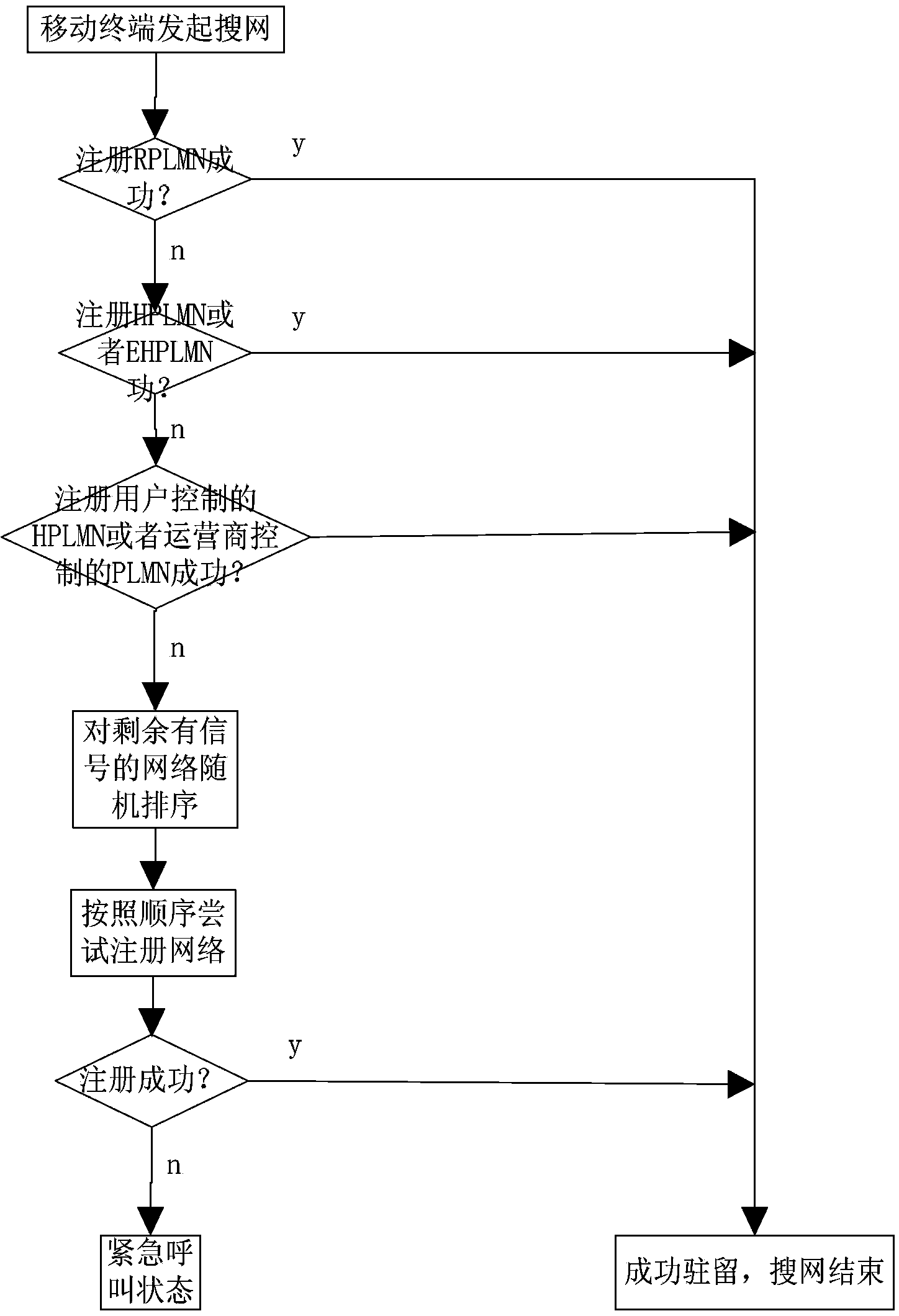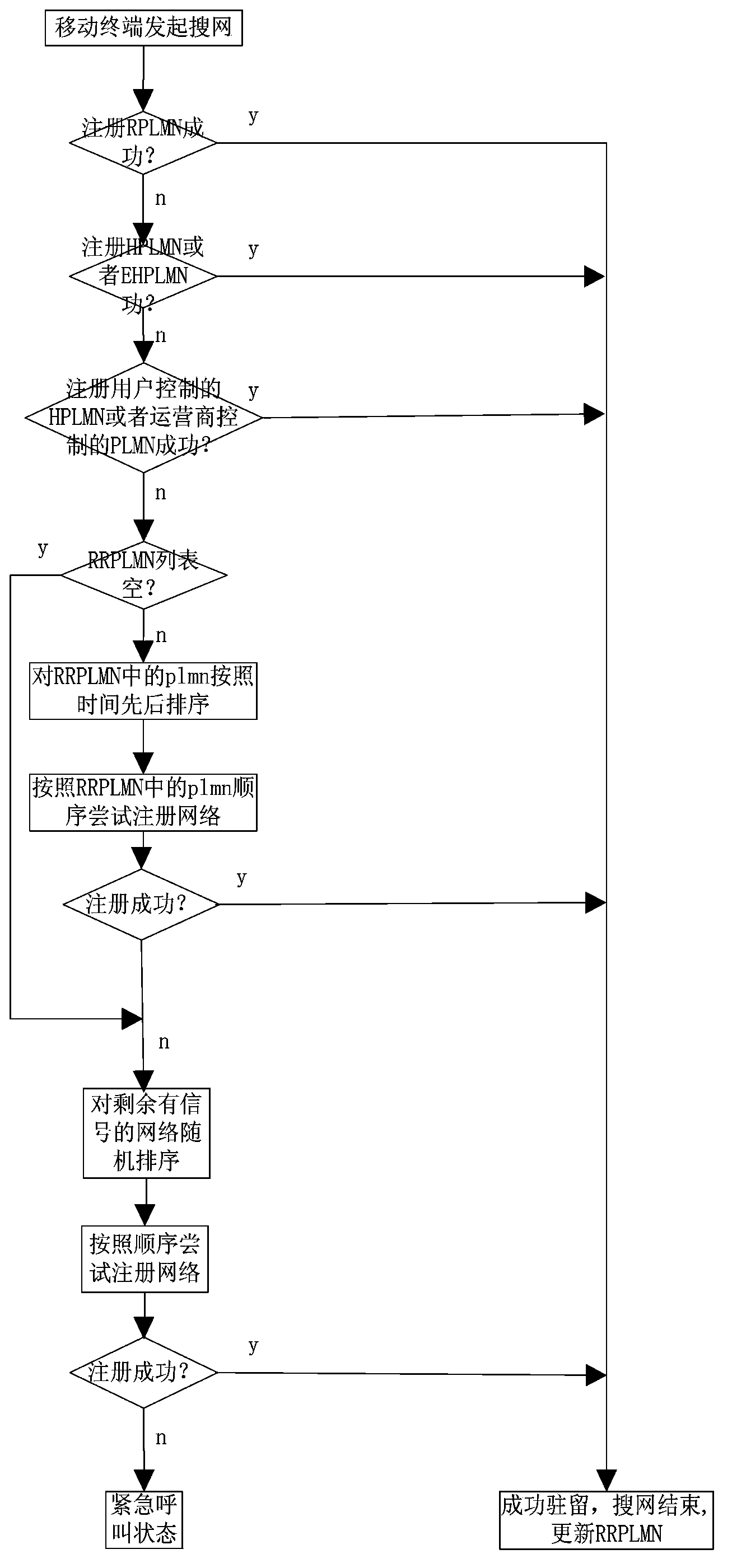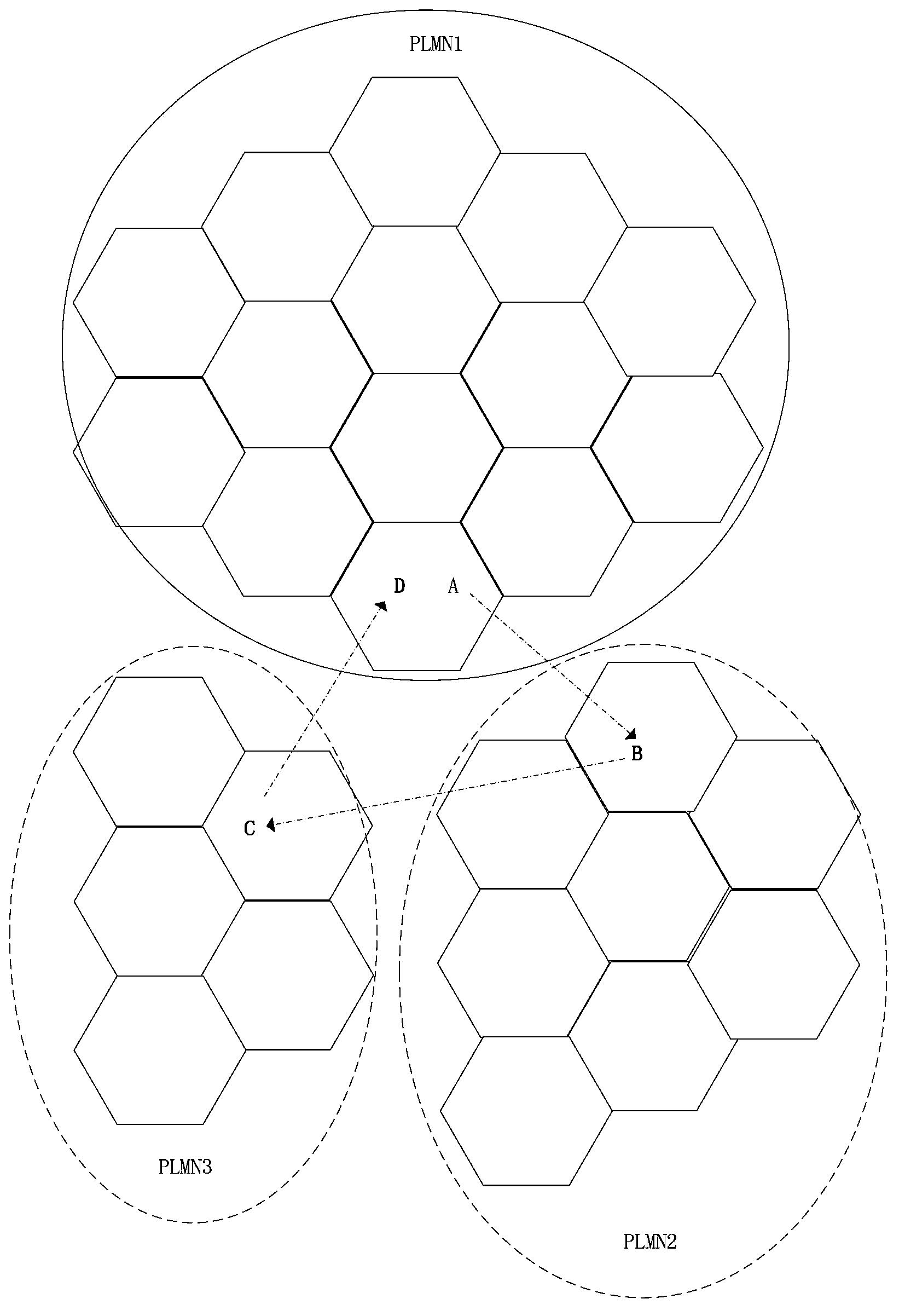Method for quickly searching for public land mobile networks
A public land mobile and mobile terminal technology, which is applied in access restrictions, electrical components, wireless communication, etc., can solve the problem of long time for mobile terminals to register with the network, and achieve the effects of improving user experience, reducing possibility, and improving performance
- Summary
- Abstract
- Description
- Claims
- Application Information
AI Technical Summary
Problems solved by technology
Method used
Image
Examples
Embodiment Construction
[0033] In order to describe the technical content, structural features, achieved goals and effects of the present invention in detail, the following will be described in detail in conjunction with the embodiments and accompanying drawings.
[0034] As described in the background art, in order to solve the problem of slow network search speed in the 3GPP standard, the existing technology optimizes it. For example, for the public land mobile network PLMN that has been successfully registered, the mobile terminal will store it in the list of recently registered public land mobile network RRPLMN in chronological order, and the later the time, the higher the priority. In this way, compared with the 3GPP standard, the search speed has indeed been improved, but there is still the possibility of random selection, thereby increasing the number of search attempts. The more attempts, the longer it will take to successfully register to the network. .
[0035] In view of the above technic...
PUM
 Login to View More
Login to View More Abstract
Description
Claims
Application Information
 Login to View More
Login to View More - R&D
- Intellectual Property
- Life Sciences
- Materials
- Tech Scout
- Unparalleled Data Quality
- Higher Quality Content
- 60% Fewer Hallucinations
Browse by: Latest US Patents, China's latest patents, Technical Efficacy Thesaurus, Application Domain, Technology Topic, Popular Technical Reports.
© 2025 PatSnap. All rights reserved.Legal|Privacy policy|Modern Slavery Act Transparency Statement|Sitemap|About US| Contact US: help@patsnap.com



